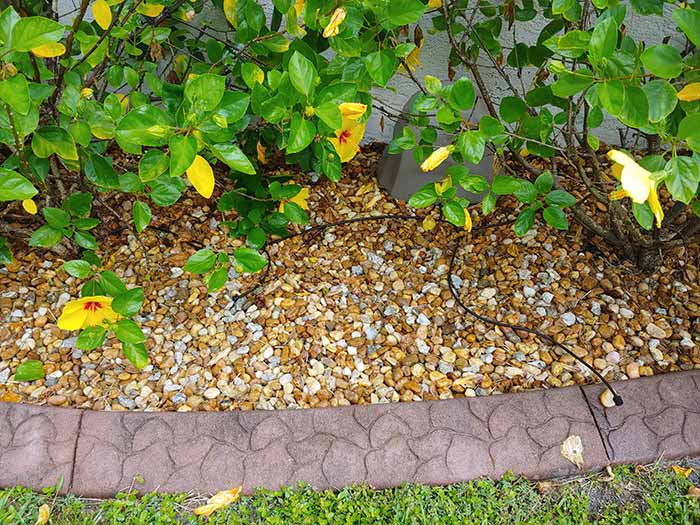Watering Rocks are an alternative watering solution that looks great in your garden and serves as a portable automatic drip system. Have you ever worried about that new plant, tree, or shrub that you just planted getting enough water and nutrients? The term rock-water interaction suggests many possible processes in nature, such as river water smoothing down rocks over the ages of time, or ocean waves crashing into a rocky shoreline. Within the Geological Sciences, however, the term has a more specific meaning: it refers to the dominantly chemical and thermal exchanges (reactions) that occur between groundwater and rocks. Wind and Water, Meet Rock. In a battle of water vs. Rock it seems like there would be an easy winner, however, the movement of water is responsible for shaping much of our planet’s surface. Over the years, water steadily wears down rocks to create incredible cave formations through the process of erosion. Join Geologist Nicolas Barth for a “tour' of the longest sea cave in the world, carved out by the power of water. Water From the Rock 17 The whole Israelite community set out from the Desert of Sin, ( A ) traveling from place to place as the Lord commanded. They camped at Rephidim, ( B ) but there was no water ( C ) for the people to drink. 2 So they quarreled with Moses and said, “Give us water ( D ) to drink.”. Behold, I will stand before you there on the rock at Horeb, and you shall strike the rock, and water shall come out of it, and the people will drink.” And Moses did so, in the sight of the elders of Israel. 1 Corinthians 10:1-4 ESV / 15 helpful votes.
Igneous and metamorphic-rock aquifers
The principal water-yielding aquifers of North America can be grouped into five types: unconsolidated and semiconsolidated sand and gravel aquifers, sandstone aquifers, carbonate-rock aquifers, aquifers in interbedded sandstone and carbonate rocks, and aquifers in igneous and metamorphic rocks. Igneous and metamorphic-rock aquifers can be grouped into two categories: crystalline-rock aquifers and volcanic-rock aquifers.
Large areas of the eastern, northeastern, and north-central parts of the Nation are underlain by crystalline rocks. Spaces between the individual mineral crystals of crystalline rocks are microscopically small, few, and generally unconnected; therefore, porosity is insignificant. These igneous and metamorphic rocks are permeable only where they are fractured, and they generally yield only small amounts of water to wells. However, because these rocks extend over large areas, large volumes of groundwater are withdrawn from them, and, in many places, they are the only reliable source of water supply.
Although crystalline rocks are geologically complex, movement of water through the rocks is totally dependent on the presence of secondary openings; rock type has little or no effect on groundwater flow.
Groundwater percolates downward through the regolith which is a layer of weathered rock, alluvium, colluvium, and soil to fractures in underlying bedrock. The water moves from highland recharge areas to discharge areas, such as springs and streams at lower altitudes. This example is in the Piedmont and Blue Ridge Province.
Volcanic rocks have a wide range of chemical, mineralogic, structural, and hydraulic properties, due mostly to variations in rock type and the way the rock was ejected and deposited. Unaltered pyroclastic rocks, for example, might have porosity and permeability similar to poorly sorted sediments. Hot pyroclastic material, however, might become welded as it settles, and, thus, be almost impermeable. Silicic lavas tend to be extruded as thick, dense flows, and they have low permeability except where they are fractured. Basaltic lavas tend to be fluid, and, they form thin flows that have considerable pore space at the tops and bottoms of the flows. Numerous basalt flows commonly overlap, and the flows are separated by soil zones or alluvial material that form permeable zones. Columnar joints that develop in the central parts of basalt flows create passages that allow water to move vertically through the basalt. Basaltic rocks are the most productive aquifers in volcanic rocks.
A typical Pliocene and younger-age basaltic lava flow of the northwestern United States contains layers of varying permeability. Permeability is greatest near the top and the bottom of the flow and least in the dense, center part of the flow. |
This map of igneous and metamorphic-rock aquifers in the United States shows the shallowest principal aquifer. In some places, other, sometimes more productive, aquifers underlie those mapped. In other places, local aquifers, such as those along stream valleys, might overlie the aquifers mapped. Local aquifers are not shown because of the scale of the map.
Igneous and metamorphic-rock aquifers at or near the land surface. | Limit of continental glaciation. North of this line, glacial sand and gravel aquifers overlie bedrock aquifers in many places. |
Basaltic rocks form most of the volcanic-rock aquifers mapped. These flows cover extensive areas in the northwestern United States and Hawaii. In places, the basaltic-rock aquifers are extremely thick. For example, those of the Columbia Plateau aquifer system in Washington are more than 2,544 meters thick in places, and those of the Snake River Plain aquifer system in Idaho are locally more than 800 meters thick. In most places, however, the thickness of these aquifers is 100 meters or less. Groundwater flow in the basaltic-rock aquifers is local to intermediate. In Idaho, the basaltic-rock aquifers are extremely permeable, and numerous large springs discharge several tens of cubic meters per second from them.
Igneous and metamorphic-rock aquifers include:
- Snake River Plain basaltic-rock aquifers(Idaho)
- Southern Nevada volcanic-rock aquifers
Watering A Bamboo Plant In Rocks

Publication source
Watering Bamboo In Rocks
